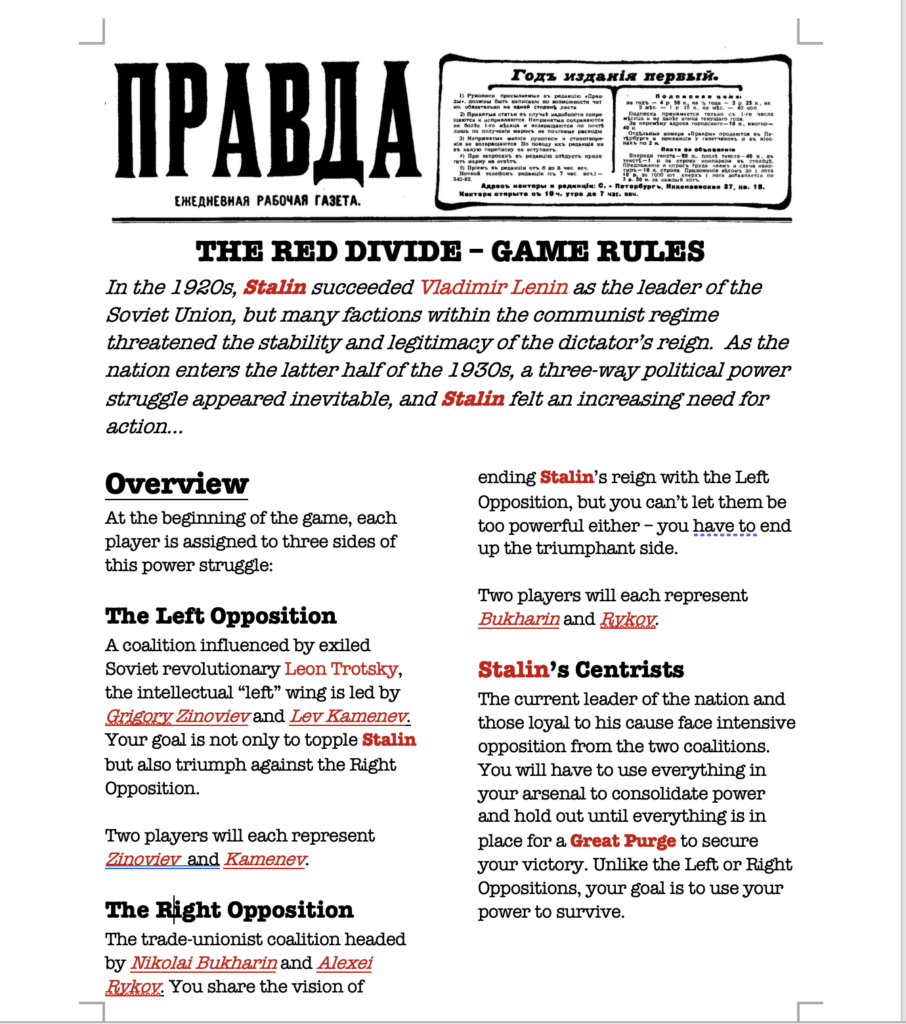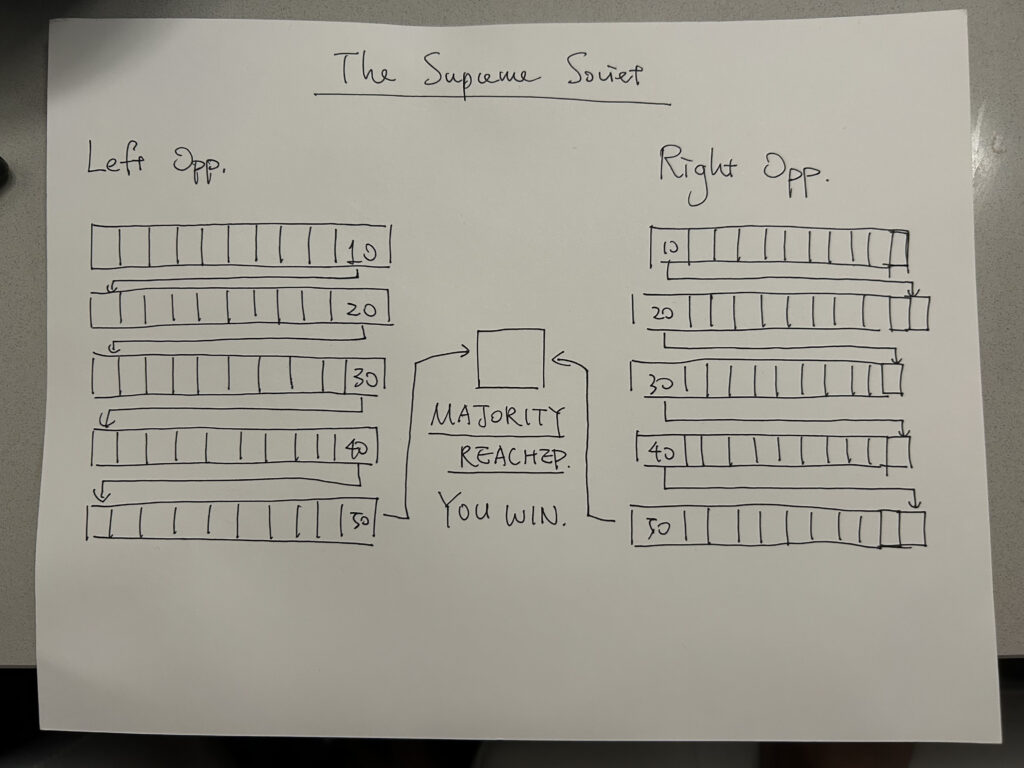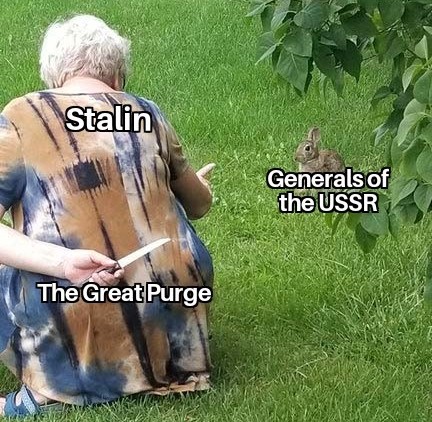This is the progress report for the board game (temporarily) titled The Red Divide (until we come up with better names) on which we have been working. At the time of writing, we have constructed the basic framework of the board game and designed the majority of the playing decks. This is a progress report of how this idea came to be, how we worked on it as a group, and the accomplishments and challenges we have encountered/are anticipating.
The Idea
Initially, we sought to draw inspiration from games like Avalon, Resistance, and Secret Hitler, but soon found out that social deduction games, also being the focus of this class much later, are very difficult to balance. Nonetheless, the political theme of Secret Hitler inspired us to come up with the theme of our game, which is set during the internal political struggles of the Soviet Union under the totalitarian regime of Stalin. We were also able to retain some elements that are central to some social deduction games, such as the ability to bluff and the lack of trust.
Ideas from the first meeting:
- 2-2-1, three sides, two sides trying to get majority, the third tries to survive x turn
- Card system
- Seats on a “parliament” as a resource
- Constraint to one action per turn
- Different types of cards
- Unstable Unicorn
- Historical theme means easy art? Keeping similar card playing style as to Control
- How do they win? Want a win condition for “survivor” so it’s not just whack a mole
- Cards: Ability point system; affiliation – using card’s ability means transferring seats to the side corresponding to the affiliation of the card
- Players on same side don’t share hands, and potentially also have independent seat counts (that are cumulative for win conditions, of course) this potentially adds dynamic for if one player accrues all the seats for a side, they would become more of a target for Stalin
From this point on, we were able to flesh out our game in the second and third meetings, focusing on balance between the 1-player “Stalin” side and the 4-player Opposition sides, which feature different playstyles and require different rules and limitations. We drafted the details of our game:
The main factions within the party was the intellectual “left wing”, composing Grigory Zinoviev and Lev Kamenev. Opposing them was the trade unionist “right wing” faction of the party consisting of Nikolai Bukharin and Alexei Rykov. The decks will consist of actual historical figures from the time period. As Stalin, the goal is to survive x turns (set to 10 right now), while the two Oppositions need to race each other for a majority within the “parliament.” Each player starts with x cards with Stalin dominating the “parliament” at the start.

Mechanics and Rules
- Penalty for having less seats than the other Opposition: something along the lines of stronger Opposition gets to draw more cards.
- Face-down cards; the ability for Stalin to check cards/veto cards/purge
- Spontaneous turns – everyone plays their cards at the same time, then Stalin vetoes
- Potential instant-use response cards
- Everyone: draw cards, play cards, discard
- Stalin: purge, check
- Purging – permanent discard; different from regular discard
Objectives
- For Stalin, the goal is to survive–stop either player from getting a majority
- For the other players, goal is to get majority.

From here, we built two decks, one to be used for the Opposition players and another for Stalin. The Opposition deck is about gaining seats and employing special abilities, while the Stalin deck seeks to allow the player to survive by making better veto decisions and manipulating the other two Oppositions. The biggest challenge so far for us lies in balancing the powers of individual cards so that the Oppositions do not steamroll too fast, and Stalin would actually have a chance of surviving 10 turns, which are problems we hope to sort out during play-testing.
